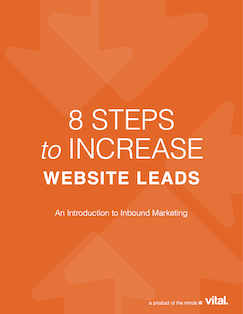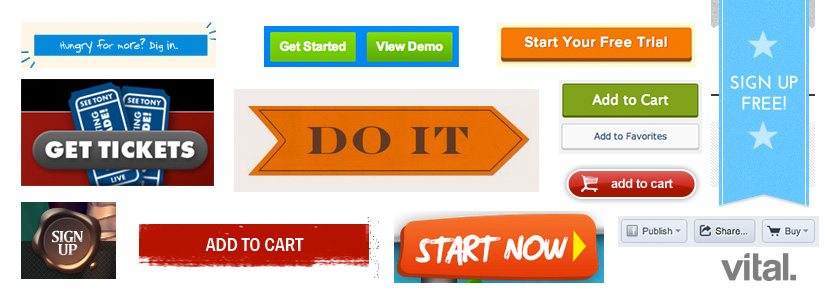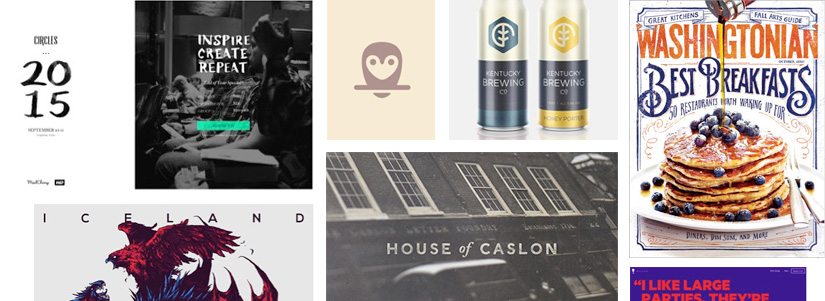When it comes to marketing, generating and converting leads should be at the top of your priority list if you want to drive growth and increase revenue. Today, the average attention span is 8 seconds, down from 12 seconds in 2000. Content on the internet has tripled from 2010 to 2013. We have so many options we no longer read, but scan. The options, offers, emails and content are endless. So, how then do we as marketers grab the attention of our potential customers and then keep their attention long enough to convert them into actual leads?!
It sounds daunting alright. But in an ever-expanding web of information, with the help of one small but bold tool, you can significantly increase your chances of attracting and converting potential customers; generating revenue and solidifying your spot as a savvy marketer. Enter the CTA (call to action).
What is a CTA?
A CTA, in essence, is exactly what it says it is: a tool calling people to action. Usually in the form of a button or a link, CTAs are used to convert visitors into leads, prompting them to take a specific action. Sounds simple enough, right? But as with all marketing communications, there are effective and ineffective ways to position, design and word the CTA. These best practices make up an effective call-to-action strategy.
Where and When to Use CTAs
CTAs are versatile, multi-purpose tools that should be utilized throughout most of your marketing communications. They are the most effective tools in your conversion rate optimization (CRO) toolbelt. Make them stand out, don’t clutter them and place them where they will be most effective. Use CTAs:
- On your website to convert visitors to leads. The types of CTAs can vary, from a CTA asking visitors to fill out a form as a tool for lead generation to a CTA offering a free trial or ebook in order to nurture leads, or a CTA for an event promotion. Using a variety of these types of CTAs throughout your site enables you to promote different services and products and attract buyers at all stages of the buying cycle.
- On your blog to recommend next steps, related content or related offers. The blog is typically a good place for CTAs because it is a section of your site that is continually being updated, bringing in new visitors who translate into new potential leads. Furthermore, your blog most likely touches on a variety of topics related to your product or service, making it a great place to market to different segments of your customer base throughout all stages of the buyers journey, from awareness to consideration and decision making. All blog posts should end with a CTA related to that blog topic. You should also be sure to place a related CTA in the sidebar of your blog in case visitors do not read all the way to the bottom of the blog post. Remember that 8 second attention span we talked about earlier?
- In your emails. Since emails are typically short and focused on one main message, your entire email should be a call to action with one CTA button. Focus on one main action you want the reader to take after scanning your email.
CTA Best Practices
Now that you know where to use your CTAs, the next step in your call-to-action strategy is knowing how they should look. Use these best practices when creating your next CTA:
Design and Positioning
- Use contrasting colors so that the CTA stands out in comparison to the rest of your page
- Place the CTA(s) wherever they make the most sense in context (read more about this in our previous post, Above the Fold Debunked: The New Way to Convert Visitors)
- Make sure that the CTA is relevant to the content on the page
- Use multiple CTAs strategically placed throughout your site in order to attract and convert visitors at all stages of the Buyer’s Journey.
Copy
- Use action oriented language such as “Download”, “Learn More”, “Subscribe”
- Keep copy brief; no more than 5 words typically
- Be clear in what you are asking the visitor to do and what they will receive once they do it
Example of an effective CTA: Ruelala
- Simple design, but still eye-catching
- Actionable, intriguing copy that grabs your attention
Example of an ineffective CTA: Macy’s
- Cluttered, does not use action words
- Color of CTA doesn’t contrast with brand or page colors
Finally, remember to test. Every business is different. By constantly measuring and analyzing, you can determine what works best for your audience and goals, leading to a CTA strategy that converts every time.
To learn more about creating, designing and writing CTAs that work, read the rest of our CTA blog series starting with Bad Call-To-Action Buttons Hurt Business — 7 Ways to Fix Them.






